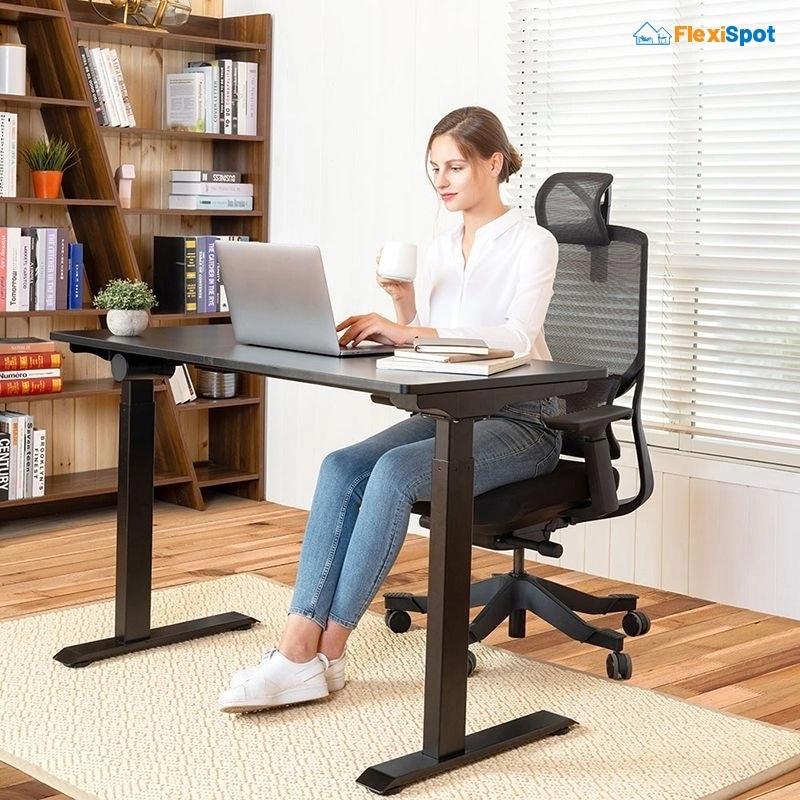Sciatic pain or sciatica is a condition of the lower back when pain radiates from the lower back, and go down through the leg, and may even reach the feet. Sciatic pain is an indication that the sciatic nerve in your vertebral column is irritated. The irritation of the sciatic nerve can be a result of several underlying conditions, including a spinal disc bulge, spinal arthritis, or lumbar spinal stenosis. Moreover, the condition can also result from prolonged sitting, especially if you continue to sit in an appropriate posture. Therefore, there is a close association between sciatica with office workers who spend long hours at their desks. Since the condition worsens with poor posture, it's likely that office workers, especially the ones who are working at home, may have an increased risk of developing this condition.
To help shift your focus off the pain and back to the work you have to do at home, here’s a guide to finding sciatica relief while you’re working at home.
Application of Hot and Cold Packs
Both hot and cold packs can be used to relieve sciatic pain while you are working at home. Hot packs help reduce pain by soothing the nerves and muscles. Moreover, the heat expands and loosens the muscles, which aids in relieving pain. On the other hand, cold packs subside inflammation and remove excess heat from the muscles. The key to using hot and cold packs to manage your pain is to know when to use each one.
Hot packs are best applied before an activity, so before you start your day, the application of a hot pack may help you the most. It aids in loosening up your muscles and gears your body up for movement. Following the application of a heat pack, it is best to do some stretches, so the blood flow to the muscles improves. If you experience pain while working, especially during the afternoon, you can keep the hot pack on your desk and apply it for 20 minutes as and when required.
On the other hand, cold packs are best for use following an activity. If you start your day with a workout, your muscles may be sore, so it's best to apply an ice pack before you start your workday. Applying a cold pack following activity will help your muscles cool down and reduce inflammation, which will eventually reduce pain. However, when using a cold pack, make sure you do not give yourself frostbite. Always apply a cold pack wrapped in a towel or cloth, and do not leave them in place for more than 15 to 20 minutes at a time.
Another way to apply cold to the sore area is an ice massage. You can use an ice cube to massage your lower back for no more than 10 minutes to ease pain and discomfort.
Get Moving
Most office jobs from home require employees to work at the desk for extended periods of time. Prolonged sitting can lead to aches and pains, with sciatica being one of the most commonly reported.
Luckily there are easy ways to manage sciatic pain, and one of the easiest ones is to get moving. Make sure you do not sit for prolonged hours. A better approach would be to set a timer every 30 minutes so you can take a break from your desk and get a quick walk.
Remember, moving is probably the most important thing you can do to manage several types of pain, including sciatic pain.
Stretch it Out
Do you think exercise can aggravate your pain? Think again.
While strenuous exercises may aggravate pain, some exercises, including stretching, can help ease several types of pain, including sciatic pain. However, the key is to be gentle. Make sure you incorporate gentle exercises in your routine which are not strenuous or painful. Incorporating certain exercises such as walking or swimming into your everyday routine can aid in managing sciatic pain. Stretching can also help in relieving sciatic pain. Some of the stretches you can try at home while working include.
Nerve glide exercise,
Sitting spinal stretch,
Standing hamstring stretch, and
Basic seated stretch.
As you try these stretching exercises while working at home, don't forget to be gentle, as inappropriate or excessive stretching can worsen the symptoms.
Maintain Good Posture
As mentioned earlier, one of the possible causes of sciatica is that people do not maintain good posture. When working, especially when working at home, it is common for people to slouch or hunch, which can be detrimental to your posture and your spine. So one of the best ways to manage sciatic pain and relieve the symptoms is to maintain good posture.
As a rule, make sure you think of your body at the right angles. When sitting upright, ensure that your eyes should be at the level with the center of your screen and your neck and shoulders completely relaxed. Also, ensure that your shoulders are directly in line with your hips and your hips form a 90O angle towards your knees with your feet placed directly below your knees. Maintaining this posture may seem difficult, but not when you invest in the right office equipment. Make sure you invest in an ergonomic office chair that allows you to maintain an upright posture that can aid in preventing and managing conditions like sciatica. Moreover, it provides support to your neck, shoulders, and spine and relieves pressure from your hips. Furthermore, it improves blood circulation, and when you sit comfortably, it also aids in boosting your productivity.

Another critical piece of office equipment that you should have at home if you are a work-at-home employee is a height-adjustable table. Without an appropriate workstation, it is common for employees working from home to use their kitchen counter to a dining table for work. While these surfaces may provide for a workstation, they do not always have an appropriate height which can strain neck and shoulder muscles and can cause injury to hands and wrists. A better alternative is to invest in a height-adjustable table. If you are looking for a height-adjustable table that can gel in well with other furniture at your home while providing your body the right kind of support, then this Theodore Height Adjustable Coffee Table makes a convenient option.
The height-adjustable coffee table is multi-functional, so whether you want to use it in your living room while you are sitting on the floor with your child or you want to use it as your dinner table while you sit on the couch, this height adjustable coffee table is convenient and versatile. It also makes a great office table as it can adjust to different heights to meet your needs whether you sit on a chair or a sofa. Featuring an elegant design and robust construct, the height adjustable coffee table can serve as a great office or dining table. While a typical coffee table should generally be between 14 and 20 inches tall, this height adjustable coffee table makes a perfect addition as its height can range between 18.9' to 29.3", making it a convenient addition to your home office.
The height-adjustable coffee table is strong and made from robust material that remains stable during height adjustment and also ensures stability at the highest setting. Moreover, it is easy to assemble and features a simple, 3-step assembly process, making it a convenient piece of furniture for homeowners and at-home employees.
Head to the Medicine Cabinet
If your sciatic pain doesn't subside with hot and cold packs, movement, and maintaining good posture, you need to take a step forward and head to your medicine cabinet. Over-the-counter (OTC) non-steroidal anti-inflammatory drugs (NSAIDs) can significantly help relieve sciatic pain. However, no medication should be taken without consulting your primary healthcare provider. Certain OTC NSAIDs, including aspirin and ibuprofen are effective in managing the pain but can bear health risks which you should know.
In case your pain continues for more than three weeks, it is best to consult a healthcare provider. Your healthcare provider will offer you medical assistance following a physical examination and some pre-requisite workup to evaluate the severity of your symptoms and condition.
Final Words
Sciatica is a health condition that won’t subside on its own. While it is not a life-threatening condition, it can lead to physical pain and even mental distress. Therefore, it is best to address this problem as soon as possible so you can live a healthy and pain-free life.






